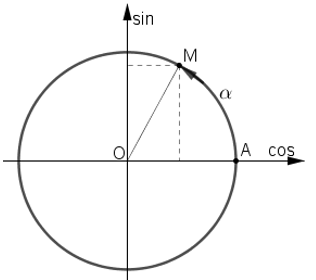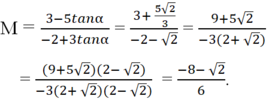
Hãy nhập câu hỏi của bạn vào đây, nếu là tài khoản VIP, bạn sẽ được ưu tiên trả lời.


do a ∈ \(\left(0;\dfrac{\pi}{2}\right)\)⇒ \(\left\{{}\begin{matrix}sinx>0\\cosx>0\end{matrix}\right.\)
Mà tanx = 3 ⇒ \(\dfrac{sinx}{cosx}=3\Leftrightarrow\dfrac{sin^2x}{cos^2x}=9\Rightarrow10sin^2x=9\)
⇒ sinx = \(\dfrac{3}{\sqrt{10}}\)
⇒ sin (x + π) = -sinx = -\(\dfrac{3}{\sqrt{10}}\)

Vì \(\dfrac{\pi}{2}< \alpha< \pi\) \(\Rightarrow\) cos \(\alpha\) < 0
\(\Rightarrow\) cos \(\alpha\) = \(-\sqrt{1-sin^2\alpha}\) = \(-\dfrac{2\sqrt{2}}{3}\)
\(\Rightarrow\) tan \(\alpha\) = \(\dfrac{sin\alpha}{cos\alpha}=\dfrac{-\sqrt{2}}{4}\)
\(\Rightarrow\) cot \(\alpha\) = \(\dfrac{1}{tan\alpha}\) = \(-2\sqrt{2}\)
Chúc bn học tốt!

Chọn C.
Nhân cả tử và mẫu với tanα và chú ý tanα.cotα = 1 ta được:



Vì 0 < α < π/2 nên sin α > 0, cos α > 0, tan α > 0, cot α > 0.
 bằng:
bằng:







Chọn A.
Ta có:
VÌ:
Suy ra: